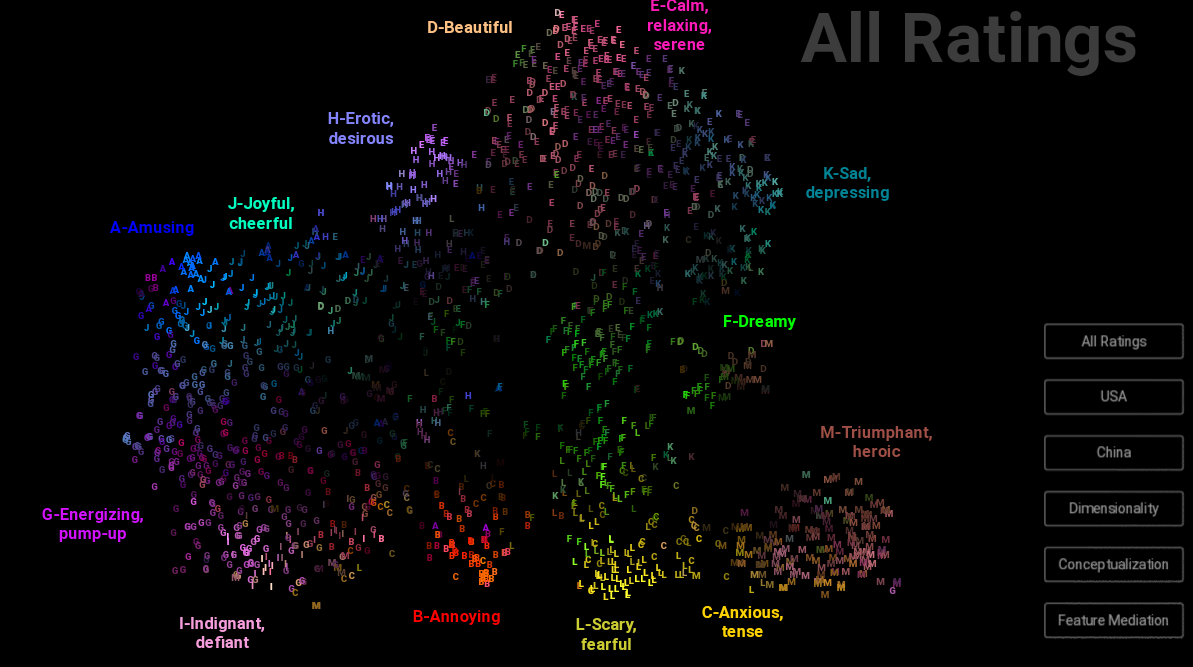Complete the map of emotions generated by music
2020/05/25 Galarraga Aiestaran, Ana - Elhuyar Zientzia Iturria: Elhuyar aldizkaria

Through research with the Chinese and American volunteer public, they have developed a map that identifies, classifies and relates the emotions generated by music. At the same time, they have confirmed that the experience of listening to music is subjective and of cultural influence.
The research has been conducted at the University of California with the participation of more than 2,500 people from China and the United States. They have heard music from styles as varied as rock, jazz, classical, heavy, folk or traditional Chinese music. Researchers have seen that the emotions felt when listening to these music can be classified into thirteen categories: toy, joy, desire, beauty, calm, sadness, sleep, victory, anxiety, fear, discomfort, challenge and excitement.
In addition to identifying emotion, they were asked whether listeners considered it positive or negative and whether the emotion was low or strong. Considering the categories and stagnations of emotions, researchers have developed an interactive map.
The map resembles a clumsy pyramid. Beauty and calm appear at the top and very close to us. From beauty to the bottom, respectively, desire, game, pleasure and excitement extend. On the other side, from calm to low, there is sadness, sleep and victory. And at the base, between excitement and victory, challenge, discomfort, fear and anxiety. The relationships between them all appear through lines, among which you can hear more than 2,000 musical fragments. For each of them it is explained what percentage of each emotion supposes, since the emotions are not pure, but staggered and confused.
The influence of culture is manifested especially in stagnation and not so much in the categories of emotions. Psycho's soundtrack caused fear of both the Chinese and the Americans. Other pieces expressed the same emotions, such as joy or discomfort. On the contrary, some considered it positive and others considered it negative, and the same happened when it seemed humble or strong.
Other researchers have warned that words used to designate emotions could influence volunteers' responses and have not taken it into account. Instead of associating music with the emotion it generates, they propose that it would be more direct to relate it to the words we use to express those emotions.
Moreover, they have recognized that the work done at the University of Califormia is complete and valuable. In fact, according to its authors, research can be useful to better understand emotions and their alterations.

Gai honi buruzko eduki gehiago
Elhuyarrek garatutako teknologia





